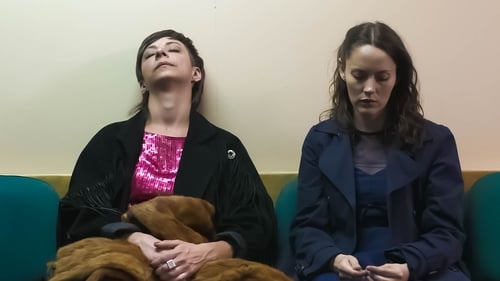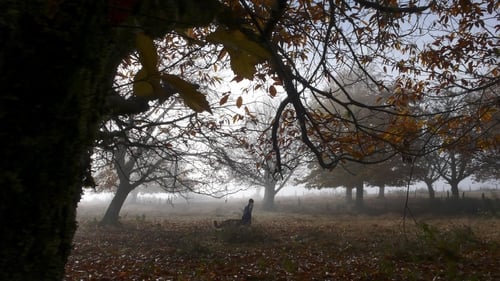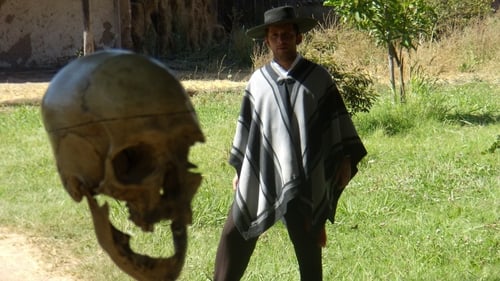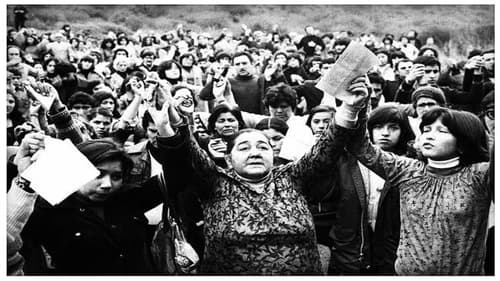
Ignacio Agüero
출생 : 1952-03-07, Santiago, Chile
약력
Ignacio Agüero is one of the most renowned documentary filmmakers in Chile. He studied Architecture and Cinema, and graduated from the School of Communication Arts of the Universidad Católica de Chile, with the title of Artistic Director with a mention in cinema in 1979. He is a founding member of the Association of Documentary Filmmakers of Chile, of which he was its first president.
Although he has stood out for making independent documentaries, he has also worked as a producer, editor, cameraman, actor, and has been a judge in national and international competitions. In 1988 he participated as co-director and editor of "La Franja del NO", a television message in the campaign for the plebiscite that overthrew the dictatorship of Augusto Pinochet.
Parallel to his work as a filmmaker, he has produced numerous works commissioned by television, both national and foreign. Among them, the most important ones: Neruda, all the love (1998), with script by Antonio Skármeta, filmed for Canal + Spain, and several chapters of the series Heredia & asociados, based on the stories of novelist Ramon Diaz Eterovic. From his production company Ignacio Agüero & Asociado, he produced the series Maldito corazón, about historical crimes in Chile, winner of the National Television Council contest and produced for Chilevisión in 2011.
No olvidar (1982), his initial film, touches on the theme of the so-called "Lonquén Ovens Massacre", committed in 1978 and discovered a few years later.
In 1988, Agüero made a documentary that made history, One Hundred Children Waiting for a Train. From misery and marginality, the film tells the innocent story of a group of children who travel from their town to the center of the city to attend a film session for the first time. It was awarded the First Prize for a Documentary at the 1988 Havana Film Festival, the year of its premiere.
In 1993 she premiered the documentary Dreams of Ice, which won the Grand Prize for Documentary at the Mannhein-Heidelberg Festival in 1994, and in 2000 her documentary Aquí se construye, first prize at the Docupolis Festival in Barcelona, and best national documentary at FIDOCS (Santiago de Chile) in 2001. In 2004 he made the documentary La mamá de mi abuela le contó a mi abuela.
Later he made the outstanding documentary El diario de Agustín (2008), about the active participation of the newspaper El Mercurio in the military coup and later in the consolidation of the military dictatorship. In 2011, he made a documentary about the building that currently houses the Gabriela Mistral Cultural Center, GAM (2001) and in 2012 he premiered his personal documentary El otro día, a film with Al that won the Altazor 2014 Award for documentary direction. This is the fourth Altazor obtained by Ignacio Agüero after the triumphs of 2005 with La mamá de mi abuela le contó a mi abuela, 2006 with Heredia y Asociados and 2009 with El diario de Agustín.
He has conducted numerous training workshops in Chile, Mexico, Barcelona, Bolivia, and has developed project tutorials in Mexico, Costa Rica, Buenos Aires, Nicaragua and Chile.
Ignacio Agüero is an associate professor at the Institute of Communication and Image (ICEI) of the Universidad de Chile and Coordinator of the Master's Degree in Documentary Film.

Editor
Belgian civil engineer Gustave Verniory still had a lot to learn when in 1889 he was hired to construct a railroad across the unspoiled natural landscape of Araucanía, a region that had recently become part of Chile. The tumultuous past and the ever-changing landscape are a constant background presence in Notes for a Film.

Producer
Belgian civil engineer Gustave Verniory still had a lot to learn when in 1889 he was hired to construct a railroad across the unspoiled natural landscape of Araucanía, a region that had recently become part of Chile. The tumultuous past and the ever-changing landscape are a constant background presence in Notes for a Film.

Ignacio Agüero
Belgian civil engineer Gustave Verniory still had a lot to learn when in 1889 he was hired to construct a railroad across the unspoiled natural landscape of Araucanía, a region that had recently become part of Chile. The tumultuous past and the ever-changing landscape are a constant background presence in Notes for a Film.

Screenplay
Belgian civil engineer Gustave Verniory still had a lot to learn when in 1889 he was hired to construct a railroad across the unspoiled natural landscape of Araucanía, a region that had recently become part of Chile. The tumultuous past and the ever-changing landscape are a constant background presence in Notes for a Film.

Director
Belgian civil engineer Gustave Verniory still had a lot to learn when in 1889 he was hired to construct a railroad across the unspoiled natural landscape of Araucanía, a region that had recently become part of Chile. The tumultuous past and the ever-changing landscape are a constant background presence in Notes for a Film.

평생을 함께 산 아나와 마리아. 말기 암 진단을 받은 마리아를 위해 숲속 나무집으로 이사한 이들은 그곳에서 자연스럽게 죽음이 다가오길 기다린다. 틀에 박힌 일과에 묻혀 지내던 커플은 자신들에게 찾아온 고통의 순간을 함께 이겨내며 다시금 사랑을 확인한다.

Camera Operator
정체를 알 수 없는 한 노부부가 매일 가방을 들고 교차로를 지난다. 감독은 그들에 대한 호기심으로 안데스 산맥의 프로빈시아 산이 보이는 사거리에 카메라를 설치한다. 카메라에 담긴 것은 몇 십 년간 붙박이처럼 있던 구멍가게들이 사라지고 대기업 체인과 높은 건물이 들어서며 변화하는 동네 풍경이다. 문득 감독은 집 안에 잠자고 있던 과거 기록을 찾기 시작한다. 언뜻 비서사적인 이미지의 나열로 보이는 이 영화는, 삶의 변하지 않는 가치에 대해 질문하며 관객 스스로 이미지의 맥락을 만드는 경험을 선사한다.

Writer
정체를 알 수 없는 한 노부부가 매일 가방을 들고 교차로를 지난다. 감독은 그들에 대한 호기심으로 안데스 산맥의 프로빈시아 산이 보이는 사거리에 카메라를 설치한다. 카메라에 담긴 것은 몇 십 년간 붙박이처럼 있던 구멍가게들이 사라지고 대기업 체인과 높은 건물이 들어서며 변화하는 동네 풍경이다. 문득 감독은 집 안에 잠자고 있던 과거 기록을 찾기 시작한다. 언뜻 비서사적인 이미지의 나열로 보이는 이 영화는, 삶의 변하지 않는 가치에 대해 질문하며 관객 스스로 이미지의 맥락을 만드는 경험을 선사한다.

Director
정체를 알 수 없는 한 노부부가 매일 가방을 들고 교차로를 지난다. 감독은 그들에 대한 호기심으로 안데스 산맥의 프로빈시아 산이 보이는 사거리에 카메라를 설치한다. 카메라에 담긴 것은 몇 십 년간 붙박이처럼 있던 구멍가게들이 사라지고 대기업 체인과 높은 건물이 들어서며 변화하는 동네 풍경이다. 문득 감독은 집 안에 잠자고 있던 과거 기록을 찾기 시작한다. 언뜻 비서사적인 이미지의 나열로 보이는 이 영화는, 삶의 변하지 않는 가치에 대해 질문하며 관객 스스로 이미지의 맥락을 만드는 경험을 선사한다.

Director of Photography
Just like in 1985, today Ignacio Agüero is back interrupting filmmakers during shooting, but not to ask what he did thirty years ago, but to find out what is purely cinematographic in what they film. These conversations are related to images in the director's personal archive, as if what is truly cinematographic was found among bits that were never made for the screen.

Writer
Just like in 1985, today Ignacio Agüero is back interrupting filmmakers during shooting, but not to ask what he did thirty years ago, but to find out what is purely cinematographic in what they film. These conversations are related to images in the director's personal archive, as if what is truly cinematographic was found among bits that were never made for the screen.

Director
Just like in 1985, today Ignacio Agüero is back interrupting filmmakers during shooting, but not to ask what he did thirty years ago, but to find out what is purely cinematographic in what they film. These conversations are related to images in the director's personal archive, as if what is truly cinematographic was found among bits that were never made for the screen.

Looking for extras and locations, a filmmaker settles on Chiloé, the second largest island off the coast of Chile. He does auditions, but mainly listens patiently to the stories of young and old people. As an outsider, he cautiously searches for the soul of the community and its underlying tensions.

Rebecca's Brother
A married woman — seeking to purify herself through a "disconnection vow" — leaves her husband and returns to her parents’ home, but finds a situation far from the peace and quiet she had imagined.

Leo Quinteros music is the base to this film in which filmmakers, actors and actresses and other creators reunite in different hotel rooms.

Self
A prominent Chilean documentary director shares his family album with the film editor of his late works. A review of one hundred photographs and a quiet conversation will rise to memories of the films of one of the most personal filmmakers.

Producer
The house of the director has a door out to the sidewalk. This gate separates the inside from the outside. The interior contains the filmmaker's personal story and his world of objects, thoughts and imaginations. Outer space contains the city of Santiago de Chile. The stories of the world inside the house are interrupted when the doorbell rings unknown and thus come into the film.

Self
The house of the director has a door out to the sidewalk. This gate separates the inside from the outside. The interior contains the filmmaker's personal story and his world of objects, thoughts and imaginations. Outer space contains the city of Santiago de Chile. The stories of the world inside the house are interrupted when the doorbell rings unknown and thus come into the film.

Writer
The house of the director has a door out to the sidewalk. This gate separates the inside from the outside. The interior contains the filmmaker's personal story and his world of objects, thoughts and imaginations. Outer space contains the city of Santiago de Chile. The stories of the world inside the house are interrupted when the doorbell rings unknown and thus come into the film.

Director
The house of the director has a door out to the sidewalk. This gate separates the inside from the outside. The interior contains the filmmaker's personal story and his world of objects, thoughts and imaginations. Outer space contains the city of Santiago de Chile. The stories of the world inside the house are interrupted when the doorbell rings unknown and thus come into the film.

Unknown Man at the Station
In Chile, during the 60´s, the son of a poor single teenage girl turns out to be a gifted painter. The man to discover his talent is the owner of the drugstore that lies in the outskirts of the small rural town, next to the railroad. He himself is an amateur painter who will try to make the boy into a great artist, like all the ones in his art books. From the pharmacists point of view in his old age, unfolds the story of this young boy who could have become a great art genius, had he not disappeared at the age of 13, along with all his works, on September 11th 1973, the day of the coupe d´état.

Editor
Teresa Wilms Montt is a writer, a rebellious woman, tormented and beautiful. He marries at age 17 challenging family opposition. She falls in love with someone she should not and the family court condemns her to confinement in a convent. Separated from her two daughters, she escapes to Buenos Aires with Vicente Huidobro. From that flight her life becomes an exciting and tragic itinerary.

Doctor
Ana, Verónica, Marta, and Toro are four lonely people who live an unadventurous and quiet existence in southern Chile. They are with each other without the need of using words, trying to save themselves in a stealthy and extreme way. In order not only of getting away of the loneliness that constitutes their innermost core, but also of finding themselves, they reach for each other to get brotherly and sexual love, affection, and a space and time of their own.

Screenplay
Exposé of the CIA-financed efforts of the Edwards family of Chile to cover up the human rights abuses of the Pinochet dictatorship through its newspaper 'El Mercurio'.

Director
Exposé of the CIA-financed efforts of the Edwards family of Chile to cover up the human rights abuses of the Pinochet dictatorship through its newspaper 'El Mercurio'.

Paulino
This was a man. He lived with his mother. He cared a manor house in the countryside of Chile. One day the man found a bone in the garden. The bone was bored. That was a bone flute. The man with the flute music play. And music song became. The voice of the song begging to seek the other bones of his scattered body. The man and his mother were in those ways of God and hell, looking for the bones that make up the skeleton of that Christian. And give him a Christian burial. And they saw what they saw, they lived what they lived. Many stories lived. And although they did not tell anyone, others told them.

Thanks
A film about the fearless photographers and photojournalists who documented strikes, demonstrations, protests etc during the Chilean military regime of Augusto Pinochet, sometimes risking their very lives.

Police Prefect
Nieves has murdered the man who was tried to rape his younger brother. Sentenced to five years in prison, she is immersed in a hard and marginal world, she does yearns to one day being released and fulfill her lifelong dream: to know the flowery desert in northern Chile. When an oversight of her captors allows her to flee, her dreams will have to wait still. She dedicates herself to managing a nightclub where her former jailmates prostitute themselves.

Daniel Rubio
In a bar in Santiago, two old men talk over their past. This is a strange discussion. In fact, they talk of themselves as if they were dead. We don't know what is true or false, what is dream or reality.

Director
Gathered by a theater company, a small town in Chile called Villa Alegre, looks deep into its origins and myths to tell their own history through a play.

Rafael
An experimental four-part 2002 Franco-Chilean digital video series written and directed by Raúl Ruiz. The first part won a FIPRESCI Award at the Montreal World Film Festival in 2002 "for the director's personal exploration into his homeland, using DV in a rigorous yet playful manner".

Teacher (segment "Ciudad de maravillas")
Anthology film composed of six standalone shorts.

Director
Agüero is able to look at the scene in all it's complexity around architectonical brutality that Santiago de Chile underwent around the year 2000.

Writer
In 1992 the Universal Exhibition in Seville was held in Spain. Chile participated in this exhibition by displaying in its pavilion an ice floe captured and brought especially by sea from Antarctica. In these true facts is based the fantasy narrated in Dreams of Ice. Filmed between November 1991 and May 1992 on board the ships Galvarino, Aconcagua and Maullín, in a voyage that goes from Antarctica to Spain, in this documentary film in which dreams, myths and facts converge towards a poetic tale turned into a seafaring saga, in the manner of the legends of the seafarers that populate the mythology of the American continent and universal literature.

Director
In 1992 the Universal Exhibition in Seville was held in Spain. Chile participated in this exhibition by displaying in its pavilion an ice floe captured and brought especially by sea from Antarctica. In these true facts is based the fantasy narrated in Dreams of Ice. Filmed between November 1991 and May 1992 on board the ships Galvarino, Aconcagua and Maullín, in a voyage that goes from Antarctica to Spain, in this documentary film in which dreams, myths and facts converge towards a poetic tale turned into a seafaring saga, in the manner of the legends of the seafarers that populate the mythology of the American continent and universal literature.

In the late 1980s, a politically neutral photographer in Pinochet's Chile is still struggling to come to terms with the "disappearance" of his activist brother in the Villa Grimaldi torture centre back in 1975.

Screenplay
Tells the story of a group of Chilean children who discover a larger reality and a different world through the cinema. Each Saturday, Alicia Vega transforms the chapel of Lo Hermida into a film screening room as she conducts a workshop for children under the auspices of the Catholic church. The hundred or so children involved had never seen a movie, and in the workshop they see and learn about the cinema: photograms and moving images, projection, camera angles and movement, film genres, and much more. And they watch movies: Chaplin, Disney, Lamorisse's 'The Red Balloon,' the Lumieres' 'The Arrival of the Train to the Station.' Finally, each child designs his own film with drawings. And then, for the first time in most of their lives, the children got to the movies in downtown Santiago.

Director
Tells the story of a group of Chilean children who discover a larger reality and a different world through the cinema. Each Saturday, Alicia Vega transforms the chapel of Lo Hermida into a film screening room as she conducts a workshop for children under the auspices of the Catholic church. The hundred or so children involved had never seen a movie, and in the workshop they see and learn about the cinema: photograms and moving images, projection, camera angles and movement, film genres, and much more. And they watch movies: Chaplin, Disney, Lamorisse's 'The Red Balloon,' the Lumieres' 'The Arrival of the Train to the Station.' Finally, each child designs his own film with drawings. And then, for the first time in most of their lives, the children got to the movies in downtown Santiago.

Don Julio
A public services employee receive the news that he will be lowered in rank and salary. So he decides to rebel, for at least the weekend...

Producer
Agüero interrupts the filming of 5 films that are being made in Chile in 1984, to ask each director the meaning in their work, at a time when making films in Chile was almost prohibited.

Script
Agüero interrupts the filming of 5 films that are being made in Chile in 1984, to ask each director the meaning in their work, at a time when making films in Chile was almost prohibited.

Director
Agüero interrupts the filming of 5 films that are being made in Chile in 1984, to ask each director the meaning in their work, at a time when making films in Chile was almost prohibited.

Director
A key document of the dictatorship years, and a pinnacle moment in Chilean cinema. Filmed covertly during the dictatorship, No Olvidar chronicles a terrible episode in Chile’s history: the kidnapping and murder of five men whose bodies were only found after five years of searching.

Camera Operator
The artist's voice-over saying "No, I wasn't happy" marks the beginning of the video-recording of this, her first art action, which consisted in the intervention to a traffic sign along a mile, specifically on Manquehue Street, in Santiago de Chile. A fundamental work within the history of 20th century Chilean art.

Director
It's Thursday, the day to go to the movies in Chile. Families see in the newspapers and advertisements the films that will be shown. Everything is prepared. A man attends a function and sitting in the audience, he gets excited when he sees his favorite images and actors on the big screen. The movie ends and the screen turns off. It is time to return to reality.

Screenplay
Two friends meet again after many years, in Santiago. One of them, successful, refuses to help the other. But after changing his mind, he realizes that the man always wants more.

Director
Two friends meet again after many years, in Santiago. One of them, successful, refuses to help the other. But after changing his mind, he realizes that the man always wants more.

Screenplay
While a group of workers demolish a building in the Providencia district, the director of the documentary talks with a stucco worker, accompanying him to his house. The dialogue, which begins with an inquiry into his trade, reveals the frustration of the worker, whose meager salary prevents him from paying the money required to obtain the title deeds to his own house.

Director
While a group of workers demolish a building in the Providencia district, the director of the documentary talks with a stucco worker, accompanying him to his house. The dialogue, which begins with an inquiry into his trade, reveals the frustration of the worker, whose meager salary prevents him from paying the money required to obtain the title deeds to his own house.

Director
Two young university students break a thief out of a lecture hall, who has locked himself in after stealing from a university business.











